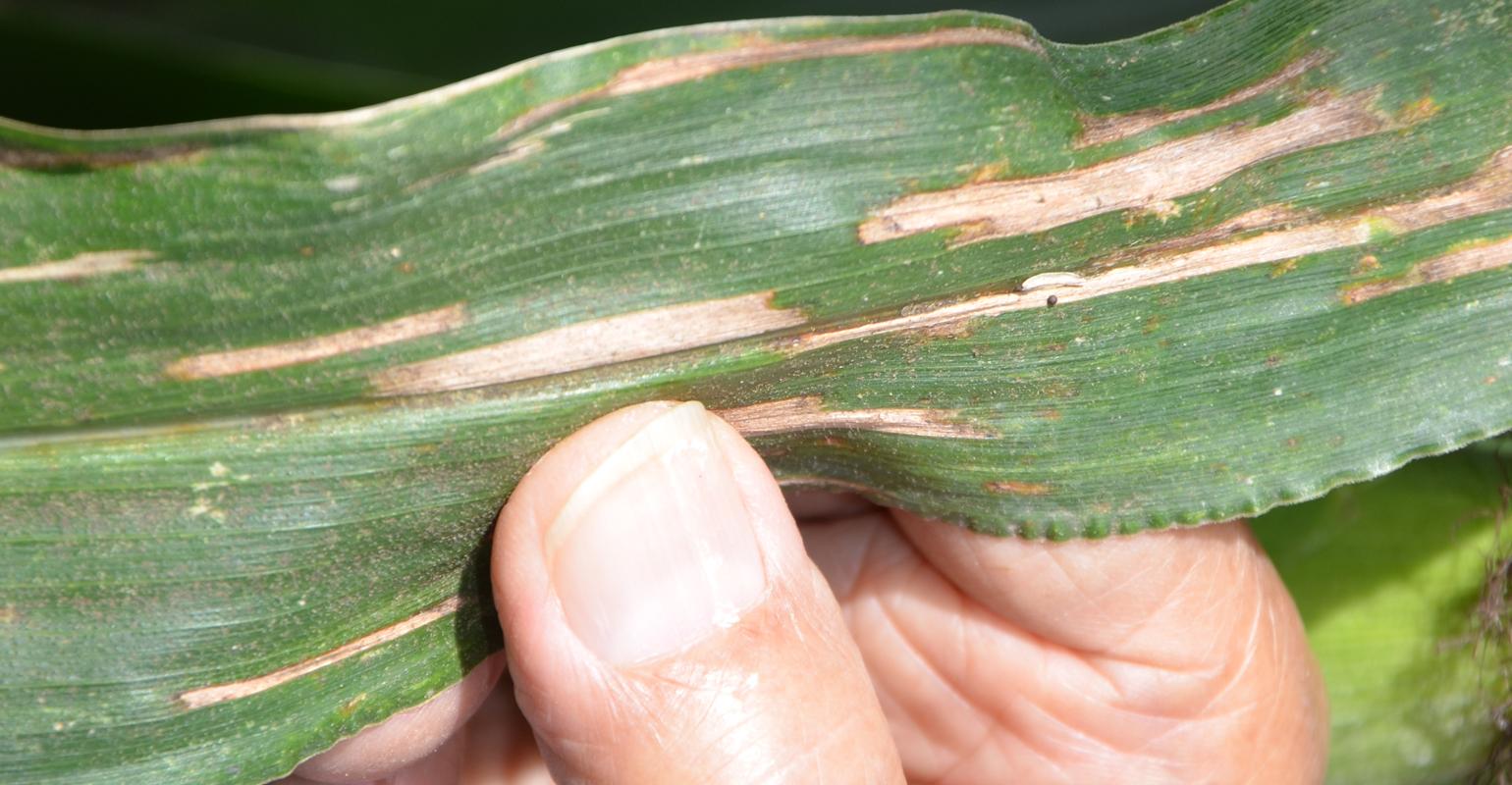Zero in on right time to apply corn fungicides

Corn Pest Beat: Let product labels and field scouting be your guides.
Apr 29, 2021
There are mixed signals on when to apply fungicides. We normally target brown silk. Now some say spray earlier, especially for tar spot. We saw some tar spot late last year. We always sprayed later because we didn’t want to risk damaging kernel set. What do you recommend?
The Indiana Certified Crop Adviser panel includes Betsy Bower, Ceres Solutions, Lafayette; Jamie Bultemeier, agronomist, A&L Great Lakes Lab, Fort Wayne; and Andy Like, farmer and CCA, Vincennes
Bower: It depends on how the year develops. If we see good rainfall and an environment that supports disease infection and development, scout early and often. We certainly need to protect corn from gray leaf spot and northern corn leaf blight if we start to see them in the canopy. If it’s wet like 2019, strongly consider protecting corn from physoderma if a hybrid you’re growing is susceptible. In a wet year, you may need to apply a fungicide near R1 regarding grey leaf spot or northern corn leaf blight. You may need to spray as early as V7 or V8 for physoderma.
If the growing year is much like 2020, with little disease development, you likely can wait until after R1 and more toward your brown silk timing. That assumes you’re finding no gray leaf spot or northern corn leaf blight lesions.
There will be some years where you may need two applications of fungicides, one at or slightly before tassel and one at R4. That’s possible if we’re finding gray leaf spot or northern corn leaf blight early and tar spot or southern corn leaf blight at R4. Remember, at R4 there are still around six weeks before corn reaches black layer.
Bultemeier: First, always read and follow the fungicide product label. Most arrested ear issues associated with fungicide application relate back to use of surfactants when treating corn prior to VT. In the northern part of Indiana, the greatest disease pressure the past few years has been later in grain fill. It has favored later fungicide treatments at brown silk.
Most fungicide chemistries have a limited window of protection. If the fungicide is sprayed too early, fungicide activity can decline before disease pressure peaks. If moderate temperatures accompany wet conditions at VT, the chance of early grain fill disease pressure is heightened. Application closer to VT would be advisable. If weather conditions are hot and dry at VT and it’s not as favorable for disease development, then a fungicide application closer to brown silk is advisable.
There are newer fungicide products entering the market with longer windows of protection that favor earlier applications. When determining what fields to treat with fungicides, focus on those corn hybrids with relatively lower disease resistance traits. Those are likely the fields that will provide the greatest yield return from fungicides.
Like: In my experience over several years, applying fungicide at VT and R1 has given the best results. This is especially true when targeting tar spot since it infects the plant 14 to 40 days before visual symptomology shows up. By applying early, you run the risk of fungicides wearing out and disease coming in late. This is rare, but a second application potentially could be needed. I would not concern myself with kernel damage. Avoiding it is as simple as excluding adjuvants if you are making a pre-tassel application.

